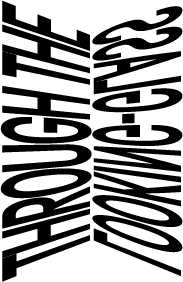 |
    by Michæl W. Bard ©2006 Michæl W. Bard |
||
|
|
|||
 |
    by Michæl W. Bard ©2006 Michæl W. Bard |
||
|
|
|||
What is furry fiction?
Kind of an odd question, isn’t it—especially given the contents of the e-zine you’re reading. But there it is.
Let’s start with a partial analysis. According to Wikipedia: ‘Furry fandom is an artistic and literary genre that celebrates the humanization of animals, specifically in cartoons and comics’. Similarly, Wikipedia tells us that ‘Fiction (from the Latin fingere, “to form, create”) is storytelling of imagined events and stands in contrast to non-fiction, which makes factual claims about reality.’
So, to a first approximation, we can define ‘furry fiction’ like so: ‘A literary genre that celebrates the humanization of animals in storytelling of imagined events.’
Sadly, this definition is so generalized as to be fairly meaningless. According to this definition, things as diverse as any story involving Larry Niven’s Kzinti, any of David Brin’s Uplift stories, The Hobbit by J.R.R. Tolkien (consider that Smaug is a major character, being that the entire novel exists because of him. Of course, he’s technically a scaley, but they’re a subset of furry anyway), and even The Valley of Horses by Jean Auel, as the novel contains both a horse and a sabre-toothed lion with almost human characters, though she tries to make them ‘realistic’.
Obviously this definition is too broad. A case could probably be made that it includes any story with an Earth (or even alien) animal in it, or even any kind of alien.
So, let’s try a different approach. According to Stanley Schmidt, the editor of Analog magazine, Science Fiction is ‘fiction in which at least one speculative idea is integral to the story; and whatever science the story uses is plausible in the light of known science’. The classical example of this definition is Daniel Keyes’ story Flowers for Algernon (filmed as the movie Charly). If you remove the core idea of a treatment that elevates human intelligence, there is no story.
Let’s try using this as a basis for a definition of furry fiction. We can ignore the second part, the plausibility clause, as furry fiction includes all other genres of fiction—SF, Fantasy, Mystery, Romance, etc.
Let’s try it: ‘Furry Fiction is any fiction in which at least one furry component is integral to the story.’ In other words, furry fiction is a story in which there is a distinctive furry component that cannot be removed without destroying the story.
Okay, the definition seems to make sense, so let’s look at some concrete examples.
First, consider a story of mine in Anthro: Becoming a Patrolsentient. The story is about furs training to become members of the Space Patrol, including an anthropomorphic horse, an anthropomorphic squirrel, an anthropomorphic fox, and an equitaur, amongst others. However, the story could be rewritten with very little difficulty with all the characters as humans. Sure, some would have biological modifications to breathe the thin air on Mars, and the ultravores in the asteroids would simply be very poor humans who have a culture of cannibalism. Sure, there is some mention of instincts, but they could be expunged, and the appropriate descriptions of physical activities changed. And after the furry-type phrases are replaced with human-type phrases, the story would be more or less identical.
Patrolsentient may read as furry fiction, but by the definition above, it isn’t. Sadly, the vast majority of furry fiction is like this. In the worst cases you could just change the characters’ descriptions from ‘fox’ (or whatever other species) to ‘human’, leaving the rest of the story intact, and it would make just as much sense.
Now consider another story of mine in Anthro: Wings of Healing. It’s the story of two parents whose son has become a full eagle due to SCABS, and how that first tears their marriage apart, and then heals it back together. Again, it could be changed to non-furry fiction by having the child afflicted with a different horrible disease, but there is nothing that really does it with the same effect. You’d pretty well have to re-write the whole story to remove the furriness from it. Thus, a case can be made that Wings fits within the definition of furry fiction proposed.
Now, for all the writers out there, how do you ensure you write furry fiction? The first test is to make your furry characters furries, not just humans in fursuits. They have different senses and would see the world differently than we do. Humans are extremely visually oriented. If you want to write a story about an anthropomorphic dog, then describe things by smell first. Also, have something about their furriness be integral to the story. In the case of the dog, have their ability to smell, and their intelligence in interpreting that information, be critical to the resolution of the story. Perhaps they smelled residual cigar smoke at the scene of the murder, and matched the scent to the brand habitually smoked by the murderer.
So, it seems we have a definition. And what does it tell us?
Consider: Creating furry art is easy—just draw a picture of an animal, and you’re done. Contrariwise, creating furry fiction is hard, at least if you want to do it well. With the definition in mind, with the knowledge of what furry fiction truly is, then we can all know better what we want to read, and what we want to write.
Good luck!